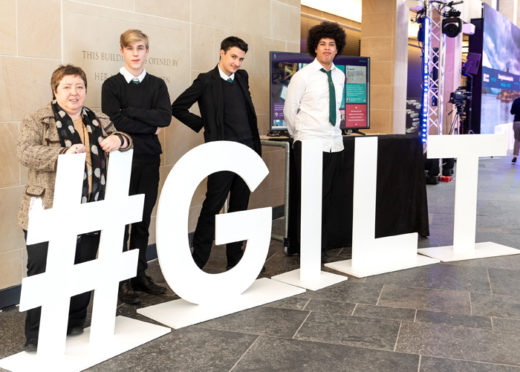How Royal Bank of Scotland is embracing creativity and technology to build a safe and secure future for customers.
From William Cullen inventing the fridge, to Sir Alexander Fleming discovering penicillin, Scots have long led the way with innovations that changed lives . . . and continue to influence us today.
These iconic innovators stand alongside John Logie Baird, Mary Somerville and Alexander Graham Bell as just a few of those at the vanguard of Scotland’s powerful heritage of innovations and discovery.
Their contribution means that the country is synonymous with technology and modernisation — and Royal Bank of Scotland is now flying that flag with pride.
The bank, which printed Europe’s first multi-coloured banknote back in 1777 and introduced fingerprint ID to its customers in 2015, has a proud history of embracing innovation.
Royal Bank of Scotland brought the first ATM – Cashline – to Scotland in the 1960s and was also one of the first UK banks to launch a comprehensive internet banking service, banking services and facilities that we take for granted today.
Shaping the bank’s technological future is Kevin Hanley. With more than two decades of experience in financial institutions across Europe and the USA, he is responsible for helping the bank to meet the innovation challenges it faces.
“At Royal Bank of Scotland, we are always coming up with creative ideas and solutions that suit a world that doesn’t pass us by,” he says.
“The scale of innovation is huge, we are seeing fundamental changes taking place in the world of financial technology with increasing regularity. It is becoming harder and harder to be truly disruptive. We’re looking for things that can be delivered into the hands of our customers at scale.”
Those creative solutions have resulted in customer tools which were once the reserve of the pages of science fiction. Facial recognition is part of the bank’s safety and security log-ins; face ID is now used by customers to log in securely to their account via their phones.
Cora, a web-based chatbot, is also changing the way people interact with technology and banking. Developed to answer basic customer questions, this year Cora held more than one million conversations with customers to solve their queries.
For Dan Salmons, Director of Innovation, Home Buying and Ownership, customers are at the heart of every new development: “Innovation should solve a business problem. If you don’t have a problem, then don’t fix it. I love solving problems to help people see a way through any obstacles. The best things for me are the things which change customers lives, even if it’s something small.”
Like many of Royal Bank of Scotland’s technology leaders, he is passionate about coming up with new solutions to solve business issues but remains realistic about the role of innovation.
“I like new technology and I like old technology that continues to work, but what I really like is new things that work better than old things. I love coming across a product that fits a hole that I know I’ve got,” he says.
Keeping track of expenses for businesses can be a challenge, so Royal Bank found a technology-led solution to help its customers and added new features to its award-winning Receipts and FreeAgent apps to help individuals and small businesses look after their finances.
Other technology related introductions by the bank include placing TechXperts at Royal Bank of Scotland branches to help customers use online and mobile banking; launching Esme Loans, a digital lending platform that allows small and medium-sized businesses in the UK to quickly get unsecured loans of up to £150,000; and the creation of completely paperless mortgages, a service which only Royal Bank of Scotland offers.
While Royal Bank may be consistently pushing boundaries of innovation and service, it is important that customers are comfortable and confident with the technology they are using. That’s why measures like TechXperts, have been introduced, alongside the Secure Banking Promise and the Little Book of Big Scams, produced in partnership with Police Scotland, to help keep customers safe and help people make use of the technology that is available.
According to Louise Smith, Head of Digitisation, Personal and Business Banking at Royal Bank of Scotland, this is an exciting time.
“It’s a massively exciting time in banking and financial services,” she enthuses. “There are thousands of opportunities appearing each day and the challenge is to decide which ones will bring the most benefit to our customers and society.”
Kristen Bennie created Open Experience at Royal Bank of Scotland to help staff across the business work together on exciting new solutions. The creative space based at the bank’s headquarters in Gogarburn in Edinburgh is a hub where design and technology collide to develop new products, services and experiences.
She explains: “Some of the most exciting innovation currently taking place is focused on improving connectivity. Technology can have massively powerful benefits when it comes to bringing people closer to their friends and family as well as businesses with their customers.
“New technology helps inspire me that everything is possible. The only limits are our imagination. That thought alone is truly exciting.”
To learn more about what the bank is doing, click here.

